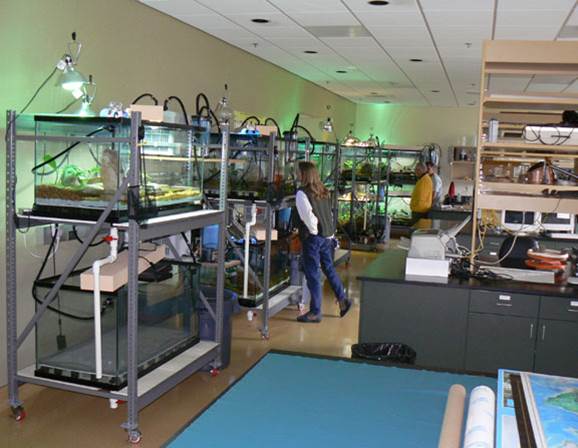Chilled Frogs are Hot: Hibernation and Reproduction of the Endangered Mountain Yellow-Legged Frog (Rana muscosa)
Abstract/Summary
In the face of the sixth great extinction crisis, it is imperative to establish effective breeding protocols for amphibian conservation breeding programs. Efforts should not proceed by trial and error, nor should they jump prematurely to assisted reproduction techniques, which can be invasive, difficult, costly, and, at times, counterproductive. Instead, conservation practitioners should first look to nature for guidance, and replicate key conditions found in nature in the captive environment, according to the ecological and behavioral requirements of the species. We tested the effect of a natural hibernation regime on reproductive behaviors and health in the critically endangered mountain yellow-legged frog (Rana muscosa). Hibernation had a clear effect on reproductive behavior, manifesting in vocal advertisement signaling, female receptivity, amplexus, and oviposition. These behaviors are critical components of courtship that lead to successful reproduction. Our main finding was that R. muscosa requires a hibernation period for successful reproduction as only hibernated females produced eggs and only hibernated males successfully fertilized eggs. Although hibernation also negatively impacted body condition, it did so without any evident declines in frog health. This dependency on hibernation is not surprising since it is a major component of the conditions that R. muscosa experiences in the wild. Similar approaches to test hypotheses based on mimicking natural ecological conditions should be used in other amphibian conservation breeding programs to ensure that captive assurance colonies can play their role as genetic reservoirs for assurance and reintroduction.
Publication details
| Published Date: | 2015-02-11 |
| Outlet/Publisher: | Endangered Species Research 27:43-51 |
| Media Format: |
ARMI Organizational Units:
Southwest, Southern California - BiologyTopics:
ManagementSpecies and their Ecology
Place Names:
Angeles National ForestCalifornia
San Bernardino National Forest
Keywords:
life historymanagement
methods
reproduction
research
restoration
T&E
threatened species

